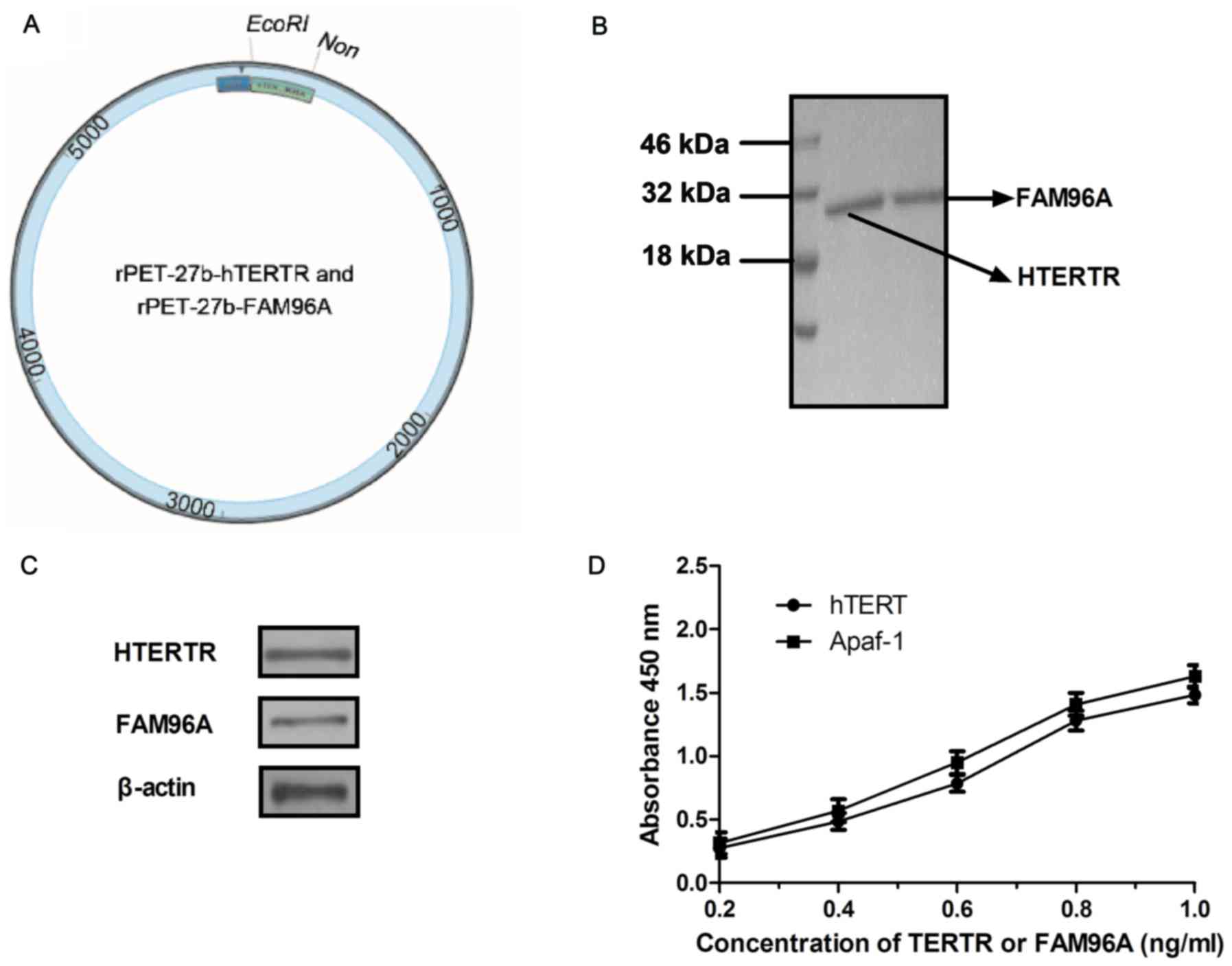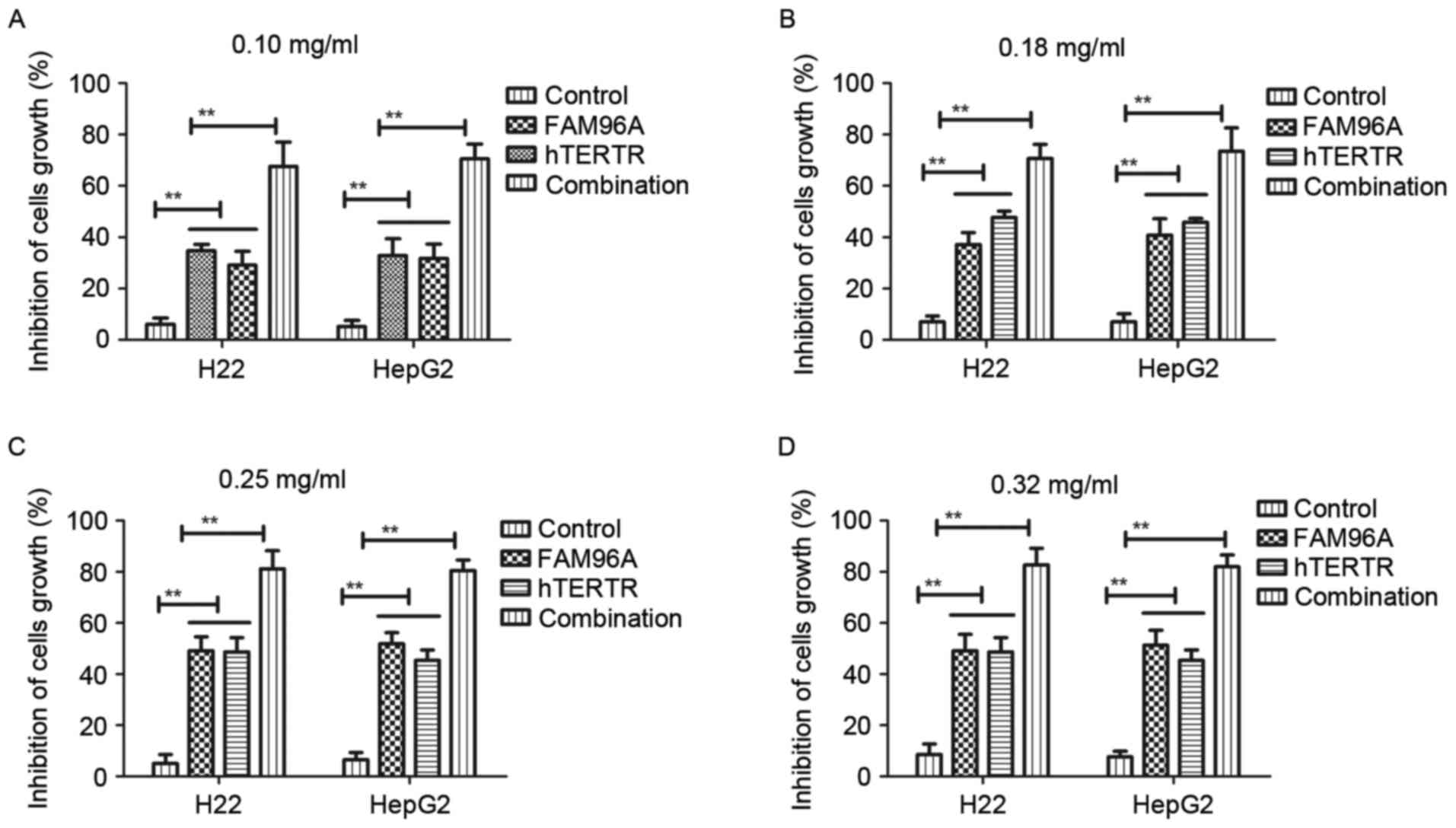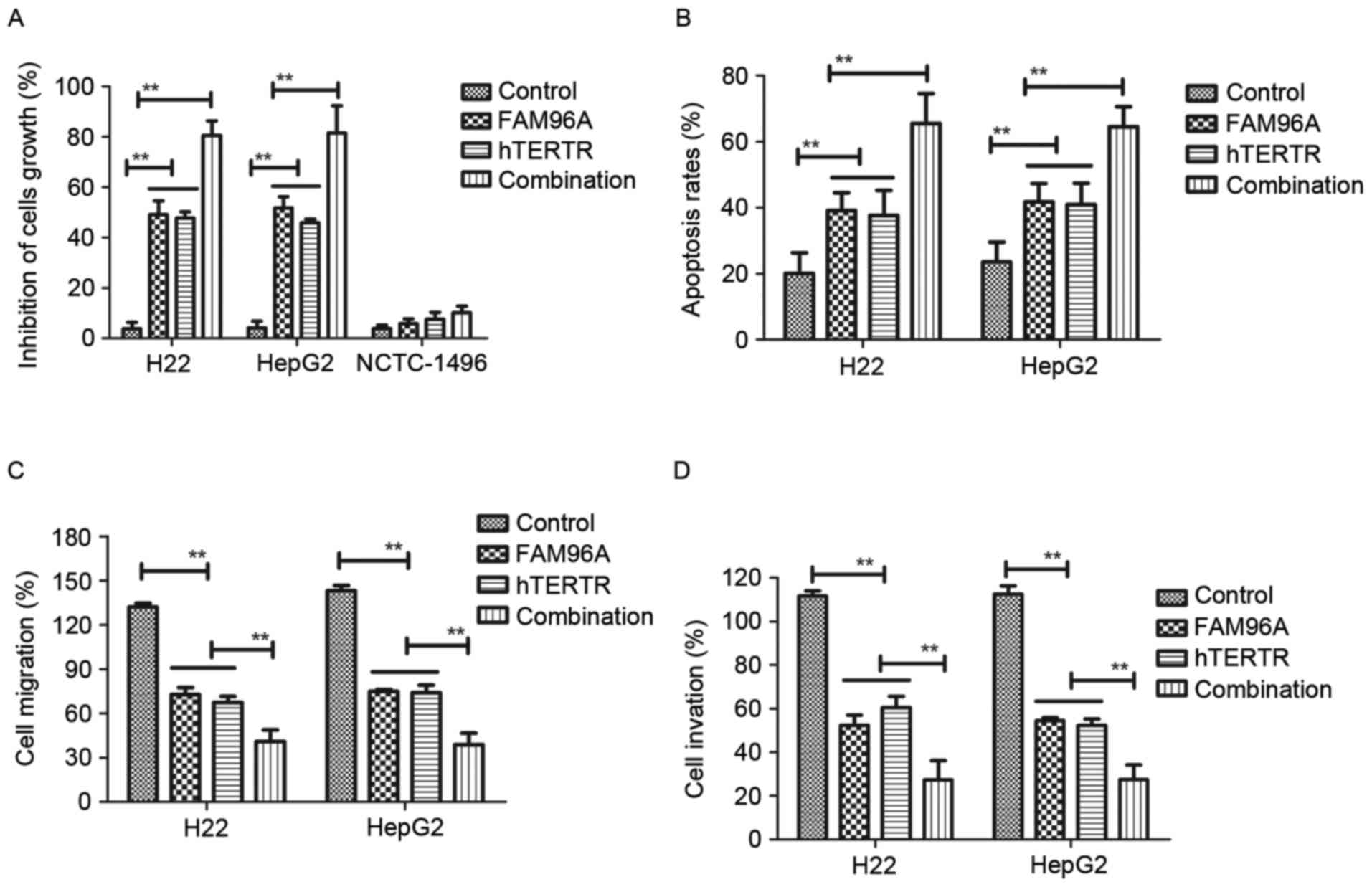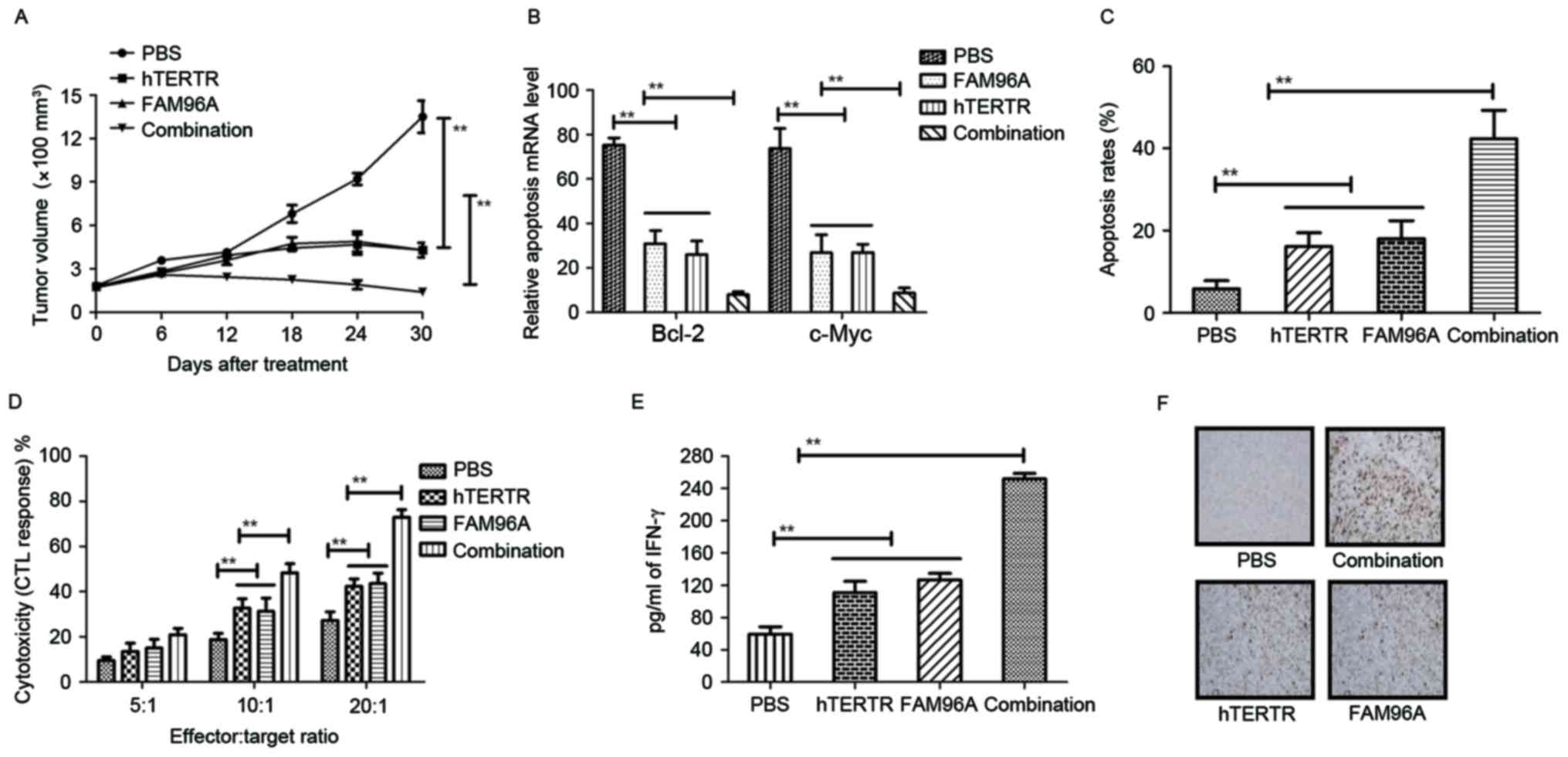|
1
|
Fung SK and Lok AS: Management of patients
with hepatitis B virus-induced cirrhosis. J Hepatol. 42
Suppl:S54–S64. 2005. View Article : Google Scholar : PubMed/NCBI
|
|
2
|
Huang YH, Wu JC, Chen SC, Chen CH, Chiang
JH, Huo TI, Lee PC, Chang FY and Lee SD: Survival benefit of
transcatheter arterial chemoembolization in patients with
hepatocellular carcinoma larger than 10 cm in diameter. Aliment
Pharmacol Ther. 23:129–135. 2006. View Article : Google Scholar : PubMed/NCBI
|
|
3
|
Devlin EJ, Denson LA and Whitford HS:
Cancer treatment side effects: A Meta-analysis of the relationship
between response expectancies and experience. J Pain Symptom
Manage. 54:245–258.e2. 2017. View Article : Google Scholar : PubMed/NCBI
|
|
4
|
Kudo K and Nakagawa K: Management of side
effects with platinum doublet chemotherapy used for treatment of
non-small cell lung cancer. Nihon Rinsho. 73 Suppl 2:S542–S547.
2015.(In Japanese).
|
|
5
|
Vincent J, de Boer M, Lobbezoo DJ, Smeets
RE and Tjan-Heijnen VC: Combination of exemestane and everolimus
may produce toxic side effects: A new treatment option for
metastatic hormone-sensitive breast cancer. Ned Tijdschr Geneeskd.
158:A75232014.(In Dutch). PubMed/NCBI
|
|
6
|
Lubienski A, Bitsch RG, Schemmer P,
Grenacher L, Düx M and Kauffmann GW: Long-term results of
interventional treatment of large unresectable hepatocellular
carcinoma (HCC): Significant survival benefit from combined
transcatheter arterial chemoembolization (TACE) and percutaneous
ethanol injection (PEI) compared to TACE monotherapy. Rofo.
176:1794–1802. 2004. View Article : Google Scholar : PubMed/NCBI
|
|
7
|
Yeh ML, Huang CI, Huang CF, Hsieh MY,
Huang JF, Dai CY, Lin ZY, Chen SC, Yu ML and Chuang WL: Neoadjuvant
transcatheter arterial chemoembolization does not provide survival
benefit compared to curative therapy alone in single hepatocellular
carcinoma. Kaohsiung J Med Sci. 31:77–82. 2015. View Article : Google Scholar : PubMed/NCBI
|
|
8
|
Guo Z, Yu H, Liu C, Si T, Yang X, Zhang W,
Xu Y and Li Y: Advances in endovascular therapy to treat primary
hepatocellular carcinoma. Drug Discov Ther. 9:342–351. 2015.
View Article : Google Scholar : PubMed/NCBI
|
|
9
|
Jiang J, Yu C, Chen M, Tian S and Sun C:
Over-expression of TRIM37 promotes cell migration and metastasis in
hepatocellular carcinoma by activating Wnt/β-catenin signaling.
Biochem Biophys Res Commun. 464:1120–1127. 2015. View Article : Google Scholar : PubMed/NCBI
|
|
10
|
Mizukoshi E, Nakagawa H, Kitahara M,
Yamashita T, Arai K, Sunagozaka H, Iida N, Fushimi K and Kaneko S:
Phase I trial of multidrug resistance-associated protein 3-derived
peptide in patients with hepatocellular carcinoma. Cancer Lett.
369:242–249. 2015. View Article : Google Scholar : PubMed/NCBI
|
|
11
|
Ibrahim AA, Abdel Aleem MH, Abdella HM and
Helmy A: Study of the role of insulin resistance as a risk factor
in HCV related hepatocellular carcinoma. J Egypt Soc Parasitol.
45:107–113. 2015. View
Article : Google Scholar : PubMed/NCBI
|
|
12
|
Huang TS, Shyu YC, Chen HY, Yuan SS, Shih
JN and Chen PJ: A systematic review and meta-analysis of adjuvant
interferon therapy after curative treatment for patients with viral
hepatitis-related hepatocellular carcinoma. J Viral Hepat.
20:729–743. 2013. View Article : Google Scholar : PubMed/NCBI
|
|
13
|
Park YJ, Kim EK, Bae JY, Moon S and Kim J:
Human telomerase reverse transcriptase (hTERT) promotes cancer
invasion by modulating cathepsin D via early growth response
(EGR)-1. Cancer Lett. 370:222–231. 2016. View Article : Google Scholar : PubMed/NCBI
|
|
14
|
Abdul-Ghani R, Ohana P, Matouk I, Ayesh S,
Ayesh B, Laster M, Bibi O, Giladi H, Molnar-Kimber K, Sughayer MA,
et al: Use of transcriptional regulatory sequences of telomerase
(hTER and hTERT) for selective killing of cancer cells. Mol Ther.
2:539–544. 2000. View Article : Google Scholar : PubMed/NCBI
|
|
15
|
Stehling O, Mascarenhas J, Vashisht AA,
Sheftel AD, Niggemeyer B, Rösser R, Pierik AJ, Wohlschlegel JA and
Lill R: Human CIA2A-FAM96A and CIA2B-FAM96B integrate iron
homeostasis and maturation of different subsets of
cytosolic-nuclear iron-sulfur proteins. Cell Metab. 18:187–198.
2013. View Article : Google Scholar : PubMed/NCBI
|
|
16
|
Mas C, Chen KE, Brereton IM, Martin JL and
Hill JM: Backbone resonance assignments of the monomeric DUF59
domain of human Fam96a. Biomol NMR Assign. 7:117–120. 2013.
View Article : Google Scholar : PubMed/NCBI
|
|
17
|
Chen KE, Richards AA, Ariffin JK, Ross IL,
Sweet MJ, Kellie S, Kobe B and Martin JL: The mammalian DUF59
protein Fam96a forms two distinct types of domain-swapped dimer.
Acta Crystallogr D Biol Crystallogr. 68:637–648. 2012. View Article : Google Scholar : PubMed/NCBI
|
|
18
|
Ouyang B, Wang L, Wan S, Luo Y, Lin J and
Xia B: Solution structure of monomeric human FAM96A. J Biomol NMR.
56:387–392. 2013. View Article : Google Scholar : PubMed/NCBI
|
|
19
|
Hawkins P, Morton DB, Burman O, Dennison
N, Honess P, Jennings M, Lane S, Middleton V, Roughan JV, Wells S
and Westwood K; UK Joint Working Group on Refinement
BVAAWF/FRAME/RSPCA/UFAW, : A guide to defining and implementing
protocols for the welfare assessment of laboratory animals:
Eleventh report of the BVAAWF/FRAME/RSPCA/UFAW Joint Working Group
on Refinement. Lab Anim. 45:1–13. 2011. View Article : Google Scholar : PubMed/NCBI
|
|
20
|
Morotomi N, Fukuda K, Nakano M, Ichihara
S, Oono T, Yamazaki T, Kobayashi N, Suzuki T, Tanaka Y and
Taniguchi H: Evaluation of intestinal microbiotas of healthy
Japanese adults and effect of antibiotics using the 16S ribosomal
RNA gene based clone library method. Biol Pharm Bull. 34:1011–1020.
2011. View Article : Google Scholar : PubMed/NCBI
|
|
21
|
Liang X, Zhang H, Zhang E, Wei J, Li W,
Wang B, Dong S and Zhu J: Identification of the pXO1 plasmid in
attenuated Bacillus anthracis vaccine strains. Virulence.
7:578–586. 2016. View Article : Google Scholar : PubMed/NCBI
|
|
22
|
Greaves MF and Brown G: Purification of
human T and B lymphocytes. J Immunol. 112:420–423. 1974.PubMed/NCBI
|
|
23
|
Zamarin D, Vigil A, Kelly K, Garcia-Sastre
A and Fong Y: Genetically engineered Newcastle disease virus for
malignant melanoma therapy. Gene Ther. 16:796–804. 2009. View Article : Google Scholar : PubMed/NCBI
|
|
24
|
Livak KJ and Schmittgen TD: Analysis of
relative gene expression data using real-time quantitative PCR and
the 2(-Delta Delta C(T)) method. Methods. 25:402–408. 2001.
View Article : Google Scholar : PubMed/NCBI
|
|
25
|
Xiong YQ, Sun HC, Zhang W, Zhu XD, Zhuang
PY, Zhang JB, Wang L, Wu WZ, Qin LX and Tang ZY: Human
hepatocellular carcinoma tumor-derived endothelial cells manifest
increased angiogenesis capability and drug resistance compared with
normal endothelial cells. Clin Cancer Res. 15:4838–4846. 2009.
View Article : Google Scholar : PubMed/NCBI
|
|
26
|
Hons JM: New insights into the
immunomodulatory effects of exercise and potential Impact on
tumorigenesis. Oncology (Williston Park). 29:921–922.
2015.PubMed/NCBI
|
|
27
|
Aldinucci D, Celegato M and Casagrande N:
Microenvironmental interactions in classical Hodgkin lymphoma and
their role in promoting tumor growth, immune escape and drug
resistance. Cancer Lett. 380:243–252. 2016. View Article : Google Scholar : PubMed/NCBI
|
|
28
|
Webb TE and Galli A: Hepatocellular
carcinoma cells that develop resistance to the telomerase-activated
prodrug ACV-TP-T may undergo spontaneous apoptosis. Med Hypotheses.
85:3832015. View Article : Google Scholar : PubMed/NCBI
|
|
29
|
Mundt HM, Stremmel W, Melino G, Krammer
PH, Schilling T and Müller M: Dominant negative (DeltaN) p63alpha
induces drug resistance in hepatocellular carcinoma by interference
with apoptosis signaling pathways. Biochem Biophys Res Commun.
396:335–341. 2010. View Article : Google Scholar : PubMed/NCBI
|
|
30
|
Jablonski EM, Mattocks MA, Sokolov E,
Koniaris LG, Hughes FM Jr, Fausto N, Pierce RH and McKillop IH:
Decreased aquaporin expression leads to increased resistance to
apoptosis in hepatocellular carcinoma. Cancer Lett. 250:36–46.
2007. View Article : Google Scholar : PubMed/NCBI
|
|
31
|
Mizuno H, Honda M, Shirasaki T, Yamashita
T, Mizukoshi E and Kaneko S: Heterogeneous nuclear
ribonucleoprotein A2/B1 in association with hTERT is a potential
biomarker for hepatocellular carcinoma. Liver Int. 32:1146–1155.
2012. View Article : Google Scholar : PubMed/NCBI
|
|
32
|
Masutomi K, Kaneko S, Yasukawa M, Arai K,
Murakami S and Kobayashi K: Identification of serum anti-human
telomerase reverse transcriptase (hTERT) auto-antibodies during
progression to hepatocellular carcinoma. Oncogene. 21:5946–5950.
2002. View Article : Google Scholar : PubMed/NCBI
|
|
33
|
Kim YH, Kim KT, Lee SJ, Hong SH, Moon JY,
Yoon EK, Kim S, Kim EO, Kang SH, Kim SK, et al: Image-aided suicide
gene therapy utilizing multifunctional hTERT-targeting adenovirus
for clinical translation in hepatocellular carcinoma. Theranostics.
6:357–368. 2016. View Article : Google Scholar : PubMed/NCBI
|
|
34
|
Schwamb B, Pick R, Fernández SB, Völp K,
Heering J, Dötsch V, Bösser S, Jung J, Beinoraviciute-Kellner R,
Wesely J, et al: FAM96A is a novel pro-apoptotic tumor suppressor
in gastrointestinal stromal tumors. Int J Cancer. 137:1318–1329.
2015. View Article : Google Scholar : PubMed/NCBI
|
|
35
|
Sacco PC, Maione P, Rossi A, Bareschino
MA, Schettino C, Guida C, Elmo M, Ambrosio R, Barbato V, Zeppa R,
et al: Combination of radiotherapy and targeted therapies in the
treatment of locally advanced non-small cell lung cancer. Target
Oncol. 6:171–180. 2011. View Article : Google Scholar : PubMed/NCBI
|
|
36
|
Batist G, Wu JH, Spatz A, Miller WH Jr,
Cocolakis E, Rousseau C, Diaz Z, Ferrario C and Basik M: Resistance
to cancer treatment: The role of somatic genetic events and the
challenges for targeted therapies. Front Pharmacol. 2:592011.
View Article : Google Scholar : PubMed/NCBI
|
|
37
|
Aggarwal R and Ryan CJ:
Castration-resistant prostate cancer: Targeted therapies and
individualized treatment. Oncologist. 16:264–275. 2011. View Article : Google Scholar : PubMed/NCBI
|
|
38
|
Rivera F, Lopez-Tarruella S, Vega-Villegas
ME and Salcedo M: Treatment of advanced pancreatic cancer: From
gemcitabine single agent to combinations and targeted therapy.
Cancer Treat Rev. 35:335–339. 2009. View Article : Google Scholar : PubMed/NCBI
|
|
39
|
Bunn PA Jr and Kelly K: Combinations of
three chemotherapeutic agents and two chemotherapeutic agents plus
a targeted biologic agent in the treatment of advanced non
small-cell lung cancer. Clin Lung Cancer. 2 Suppl 1:S23–S28. 2000.
View Article : Google Scholar : PubMed/NCBI
|
|
40
|
Cabrespine A, Bay JO, Barthomeuf C, Curé
H, Chollet P and Debiton E: In vitro assessment of cytotoxic agent
combinations for hormone-refractory prostate cancer treatment.
Anticancer Drugs. 16:417–422. 2005. View Article : Google Scholar : PubMed/NCBI
|
|
41
|
Lee BS, Kim HJ, Hwang JW, Cheong KH, Kim
KA, Cha HY, Lee JM and Kim CH: The dual inhibition of Met and EGFR
by ME22S, a novel Met/EGFR bispecific monoclonal antibody,
suppresses the proliferation and invasion of laryngeal cancer. Ann
Surg Oncol. 23:2046–2053. 2016. View Article : Google Scholar : PubMed/NCBI
|
|
42
|
Taki S, Kamada H, Inoue M, Nagano K, Mukai
Y, Higashisaka K, Yoshioka Y, Tsutsumi Y and Tsunoda S: A novel
bispecific antibody against human CD3 and ephrin receptor A10 for
breast cancer therapy. PLoS One. 10:e01447122015. View Article : Google Scholar : PubMed/NCBI
|


















